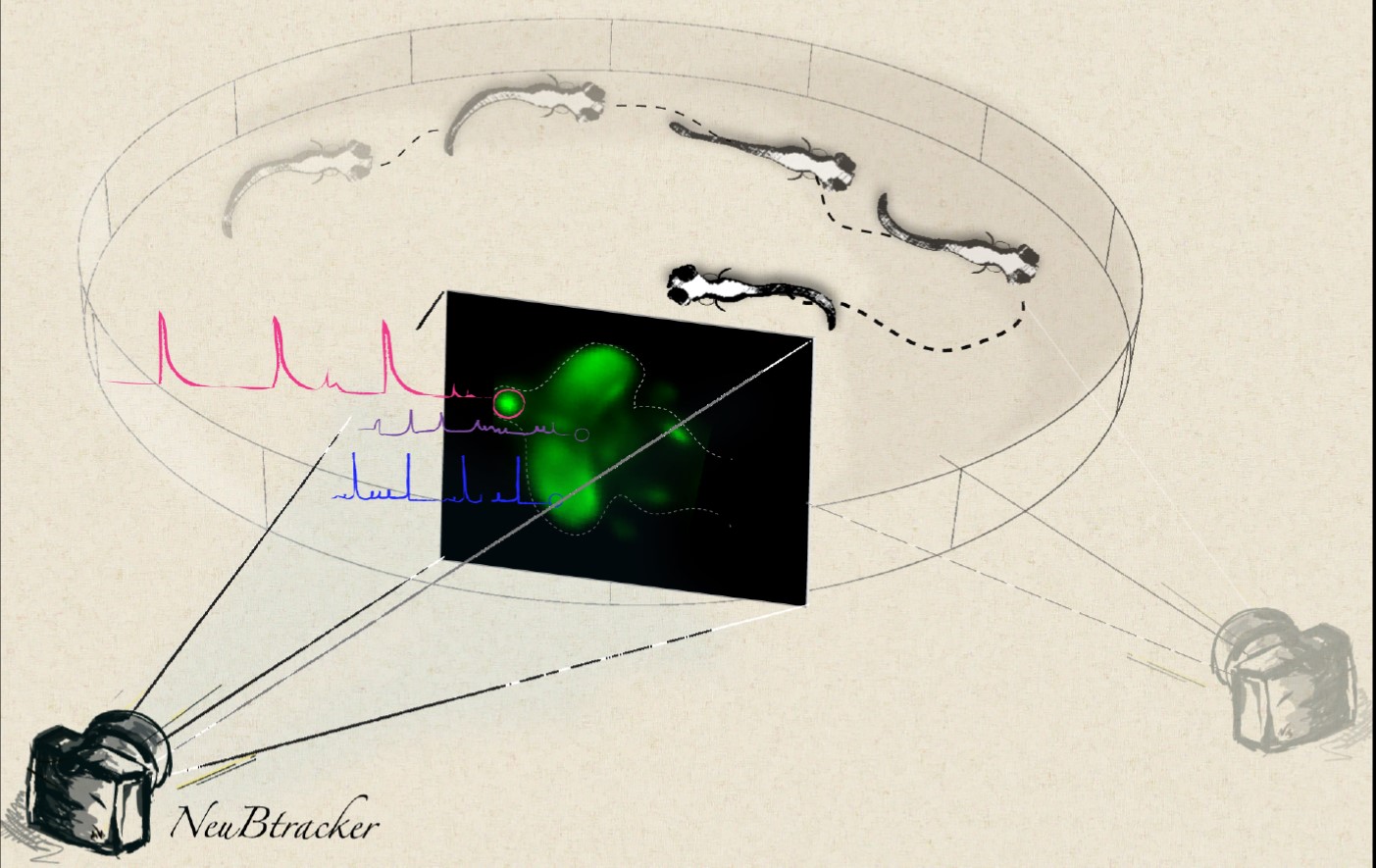Tracking live brain activity with the new NeuBtracker open-source microscope
Zebrafish live and in colour

NeuBtracker is equipped with two cameras: One tracks the unrestrained behavior of the zebrafish larva while the other automatically remains pointed at the transparent head, and consequently the brain, to record fluorescence images. “This approach makes it possible to observe neuronal activity during unrestrained behavior. We can test the larvae in different environmental conditions and can immediately analyze the effects,” says Prof. Dr. Gil Westmeyer from the Institutes of Biological and Medical Imaging (IBMI) and Developmental Genetics (IDG) at the Helmholtz Zentrum München as well as the Department of Nuclear Medicine and Munich School of Bioengineering (MSB) at the Technical University of Munich (TUM).
For example, by adding substances that influence metabolism, it is possible to observe resulting neuronal events in the brain in vivo. “Now we can finally simultaneously observe the effects of physiologically active substances on the behavior and brain activity,” states Panagiotis Symvoulidis from the TUM and the Helmholtz Zentrum München and the study’s first author. “The selective expression of fluorescent sensor proteins allows us to detect the activity of particular neurons.” “Consequently we can see exactly which areas in the brain are active during specific behaviors,” adds Dr. Antonella Lauri from Westmeyer’s team.
A microscope that anyone can build
The new instrument is a so-called open-source microscope. This means that instructions on how to build the microscope are available to everyone on the web (www.neubtracker.org). “We wanted to give our scientific colleagues the possibility to build their own NeuBtracker because we had been waiting for such a device for years,” Westmeyer explains. “It is finally possible to see the effects of pharmacological substances on the behavior and the neuronal activity - or other cellular signal processing events - at the same time and across an entire organism. This systemic approach enables us to make new discoveries and we will for example seek to use this device in drug discovery and metabolic research,” Westmeyer adds.
The Helmholtz "Imaging and Curing Environmental Metabolic Diseases" Alliance (ICEMED) and the ERC Starting Grant to Gil Westmeyer supported the interdisciplinary project, in which also the TUM Institute of Neuroscience and the Chair for Computer Aided Medical Procedures & Augmented Reality, as well as the Munich School of Bioengineering (MSB) of TUM participated.
Original publication
P. Symvoulidis, A. Lauri, A. Stefanoiu, M. Cappetta, S. Schneider, H. Jia, A. Stelzl, M. Koch, C. Cruz Perez, A. Myklatun, S. Renninger, A. Chmyrov, T. Lasser, W. Wurst, V. Ntziachristos and G. G Westmeyer, NeuBtracker – imaging neurobehavioral dynamics in freely bahaving fish, Nature Methods, October 2017, DOI: 10.1038/NMETH.4459
Kontakt
Prof. Dr. Gil Westmeyer
Professor for Molecular Imaging
Technical University of Munich
Phone: +49 (0) 89 3187-2123
gil.westmeyer@tum.de
Further Information
Technical University of Munich
Corporate Communications Center
- Dr. Vera Siegler
- vera.siegler@tum.de
- presse@tum.de
- Teamwebsite